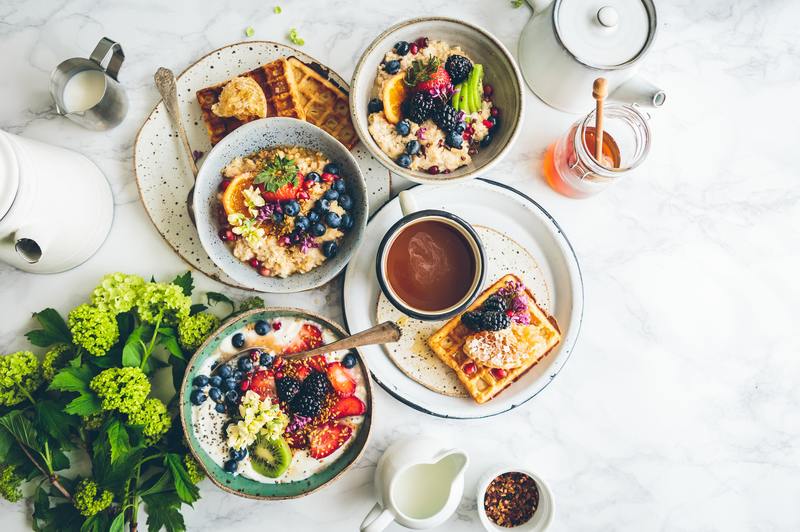Since mold can grow almost anywhere, knowing which food will mold the fastest can help you store mold-prone food in a safer, mold-resistant environment. In general, wet food or foods with high water content such as soft fruits are the quickest to develop mold.
With that said, several different foods would come to mind. How do you prevent mold from growing and can moldy food still be eaten? Continue reading to learn the answers and everything else you need to know about which food develops mold first.

What Kind Of Food Develops Molds The Fastest?
To understand what kind of food grows mold the fastest, you should first understand how mold develops. Mold is a type of fungus that uses airborne spores to look for a suitable place to grow.
The most suitable environments for mold growth are cool places with adequate water, food, and good air quality. As such, fresh foods with high water content and exposed to nature are going to be susceptible to mold.
With that in mind, you can already see why bread, cheese, soft-skinned fruits, and vegetables left in the open are almost always the targets of food mold. In contrast, dry food will mold slower than wet food. The best comparison would be white bread and pita bread.
White bread, along with whole wheat bread and pastries with fruits, will mold quicker than pita bread because white bread is more susceptible to the moisture in the air. As such, pita bread and similar kinds of food take longer to develop mold and, subsequently, have a longer shelf life.
What Food Can Be Eaten Despite Having Mold?
Mold almost always causes food spoilage, which makes the food inedible. With that being said, the most reasonable decision would be to discard the food when you see mold growing on it.
However, this is not always the case. In some cases, you can still eat certain kinds of food as long as you cut away the moldy part without touching it with the knife.
The kinds of food you can salvage are firm vegetables and fruits such as carrots and apples, hard cheese, hard salami, dry-cured hams, and other similar food. You can also salvage cheese where mold is a central part of processing, such as gorgonzola.
It would be best to remember to cut an inch around, above, and below, the moldy area to make sure that the salvaged food is fungus-free. In contrast, you should immediately discard bread, baked goods, jellies and jam, peanut butter, nuts, meat, yogurt, soft fruits and vegetables, and cooked food when you see mold beginning to grow.
What Do You Do To Prevent Mold From Developing On Food?
There are a few steps you can take to keep your food from developing mold, according to the US Department of Agriculture. The first step you can take is to keep your food in the refrigerator. If you must take your food out, it would be best not to keep them outside of the refrigerator for more than two hours.
Since fresh fruits and vegetables are vulnerable to mold infestations, it would be best to cover them with plastic wrap to protect them while keeping them moist. You should also keep the cover on when serving food to prevent exposure to mold spores.
It would also be a great practice to routinely clean your refrigerator and other places you store your food in. That way, fungi, and bacteria will have no place to grow.
Mold spores are not harmful when inhaled in small quantities, but they can quickly grow in your food. To help you reduce them, here is an article on how to get rid of mold spores in the air.
Is Moldy Food Dangerous?
Moldy food is dangerous depending on the kind of mold that grows on it. The benign mold found on gorgonzola and other similar cheeses is a natural and necessary part of the production process. As long as you cut off the fungi, you can enjoy the cheese.
However, mold is dangerous to your health even if it’s not present in food. Merely inhaling mold spores can cause adverse health effects such as itchy eyes and skin and respiratory issues.
The effects of mold on the human body can be worsened if the fungus is ingested through food because mold can produce chemicals called mycotoxins. Some kinds of mold produce this chemical, including the infamous toxic black mold.
If a person ingests large amounts of mycotoxin or is exposed to it for a long time, they could develop diseases. In some cases, these toxins can even lead to death.
The mycotoxin from black mold is dangerous whether ingested or inhaled. To help you identify it, check out this complete guide on how to easily identify black mold.
Conclusion
Either if it’s to keep your food safe or help you in a science experiment, knowing which food will mold the fastest can help you determine the products that are most prone to fungal infestation. Once you know which food products are vulnerable, you can take necessary precautions to keep you and your family safe and disease-free.
